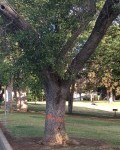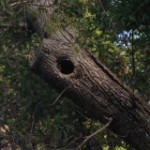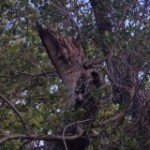Subscribe to our Newsletter!
 East Sacramento Preservation
East Sacramento Preservation- Neighborhood National Night Out Celebration 07/25/2023
- East Sacramento Preservation 2023 Scholarship Winners 07/20/2023
- Neighborhood National Night Out Celebration 07/30/2022
- East Sacramento Preservation 2022 Scholarship Winners 07/26/2022
- Tell the City: Climate Action Plan must Protect Trees 07/24/2022
Monthly Archives: July 2015
River Dangers
“My parents drilled river safety into us with one rule: Don’t swim in the rivers.”
 Teachers never really know how lessons will follow students
Teachers never really know how lessons will follow students
On the first day of each school year, I pull out a laminated story from The Sacramento Bee. The picture shows a boy in a life vest and the story covers safety on the river. My tanned students, fresh from summer, eye the paper and pass it around. Then I tell my stories.
Many years ago my father took me aside to show me a small clipping from the paper. A young girl drowned in the American River. Her last name was Brown, and I sat behind her the prior year in school. She tripped into an underwater hole and was overcome by the currents. She died on a beautiful July day playing with her family and friends.
My parents drilled river safety into us with one rule: Don’t swim in the rivers. They were lifelong Sacramentans and had their own stories of river death.
Years later, one of my students died in the Sacramento River. He was being chased by a group of boys who were angry that he’d flirted with one of their girlfriends. He jumped into the river to evade them and drowned.
I teach immigrants – children from Laos, Vietnam, Mexico and other warmer climates. Equally dangerous rivers flow in these countries, but they are often not as cold, as deep or as fast moving as ours. Many of my students don’t know how to swim, let alone understand icy mountain water. Pushed by blazing summer heat, the young and invincible will wade into the rivers. But in my silent classroom, wide-eyed students listen to my stories of dangerous undertows, snags and Sierra snow runoff.
Sadly, these stories are not new to some students. To keep their interest, one of my fall assignments is making a game. Students experiment with writing rules, and planning paths and strategies.
Xiong turned in a two-sided paper, handmade dice with pencil point dots and no instructions. The paper was covered with dozens of numbered spaces, arrows, ladders and pictures. The setting was Laos and the drawings depicted each of the perils he lived through before coming to America. There were villages with huts and gardens, men with guns, burning houses, mountains, rivers and an airplane that could go either to happy California with sun and dancing children or to a camp with barbed wire. You rolled the dice to begin your journey. The river square showed a person drowning.
Quickly I changed the tone from healthy fear to education: Learn how to swim. I smile and pass out papers that cheerfully announce swim lessons at the local pools. Look at these free life-jacket stations. I flash pictures of the jackets from Howe Avenue and Discovery Park. Tell your folks my stories, and don’t swim in the rivers. Swim in pools.
I’ll never know if I have saved a life. Teachers never really know how lessons will follow students. They might be instantly forgotten or resurrected much later. But if a child brings lessons home, parents listen and information is passed on.
August is around the corner and teachers will be thinking of their new lesson plans. In the flurry of the first school days, teach a lesson that might save a life. Tell the stories you know, and then, come May, tell the stories again. Act flustered. Did I tell you this at the beginning of school? Yes, well, it must have been so important I have to repeat it. Summer’s coming, and the rivers will tempt you, but …
Ellen Cochrane
Posted in Uncategorized
Comments Off on River Dangers
Let’s Keep the Bluebird of Happiness
Cavity-nesting birds in East Portal Park
The drought has killed several trees in East Portal Park and I now see that many of them have been marked with an orange ring, presumably so that they can be taken down. While I recognize the need to remove any which pose a safety risk, it is also important for the city to consider the wildlife value of these very trees.
Our city is home to a wide variety of bird species, many of which breed right in town. Among those birds, some nest only in cavities in trees. For the most part the trees, which provide the best cavities for these birds, are ones which are dead or dying. I walk East Portal Park nearly every morning and have noted that at least three bird species have nested each year in cavities in trees in this park: Nuttall’s Woodpecker (a woodpecker found only along the west coast in California and Oregon), Western Bluebird, and Oak Titmouse. In particular, all three species are using cavities in some of the marked trees. (Zelkova species, I believe.) I am hopeful that the city will consider saving at least one or two of these trees.
I also understand that, besides safety issues, there is an aesthetic reason for taking down dead or dying trees. Few people actually understand that, from a wildlife perspective, these are often the most valuable trees in a forests (urban OR native forests). Many other communities have recognized this and have implemented programs to try to save some of these trees, marking them with “Wildlife Tree” signage so that the public understands why they have been saved. One example is a program in place in Orange County (http://cavityconservation.com/). An example of the type of signage used is shown below.
I have included a few photos showing cavities which have been used by nesting birds in recent years in East Portal Park. One tree in particular has been very productive and I am hopeful that this tree, at least, can be retained. It is along M Street, just where 51st intersects.
Contributed by Ed Pandolfino, Ph.D. (former president of Western Field Ornithologists, co-author of Birds of the Sierra Nevada)
Posted in East Portal, Ed Pandolfino, Essays, Parks, Preservation District, Trees, Uncategorized
Tagged bluebirds, drought, East Portal, East Sacramento, East Sacramento Neighborhood Associations, East Sacramento Preservation, nut, trees, Urban Wildlife, woodpecker
Comments Off on Let’s Keep the Bluebird of Happiness





















 Subscribe In A Reader.
Subscribe In A Reader. Check Us Out On Facebook!
Check Us Out On Facebook! Check Us Out On Twitter!
Check Us Out On Twitter! Visit Nextdoor!
Visit Nextdoor!








